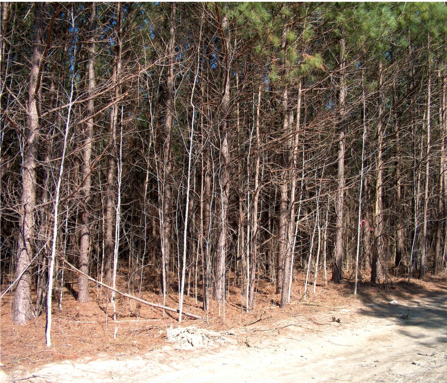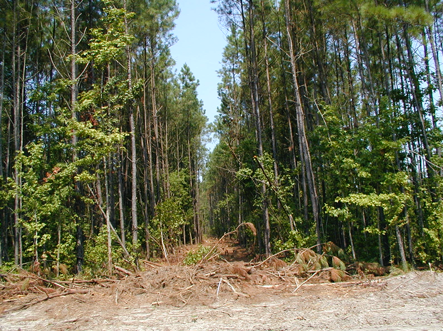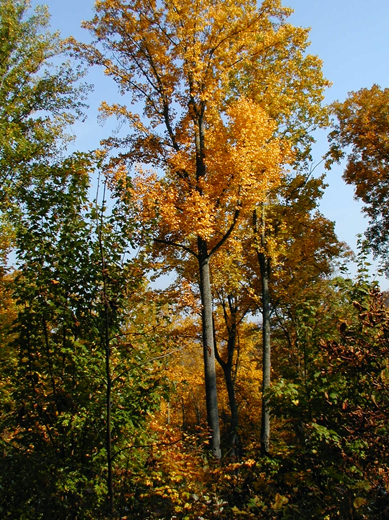Important stewardship goals like wildlife habitat, aesthetics, soil and water protection, and timber productivity are still possible when the forests are managed with long-term health objectives. These goals often start with the removal of unwanted vegetation which is too costly to remove for some landowners. New local biomass markets may help landowners reduce the cost of managing unwanted vegetation. This article describes how improving woody biomass markets in North Carolina can increase your timber-based income along with forest health and productivity through forestry practices.
Biomass Markets
In North Carolina, with the rising wood pellet production for overseas exports, demand for woody biomass has improved considerably in recent years. The US Forest Service Timber Product Output (TPO) survey revealed that in 2015, about 7.3 million green tons of logging residues were produced in North Carolina, one of the most forested states in the South. Similarly, research suggested that North Carolina has potential to produce about 3 million bone dry tons of the recoverable logging residues every year (Pokharel et al. 2019). Unwanted vegetation, currently a liability, may be a profitable or breakeven commodity, creating economic options for increasing growth and good management on private lands. Selling biomass offers a reasonable opportunity to increase your forest productivity through some of the practices below.
Final Harvest
Regenerating a new forest stand by removing tops and branches during the final harvest has practical benefits. Removal of this excess biomass during a logging operation:
Reduces
-
Site preparation costs
-
Fire, insect and disease risk
-
Carbon release to atmosphere through decomposition and burning of woody debris (Dale et al. 2017)
Increases
- Site access and maneuverability
- Area devoted to planting
Local biomass markets not only create some extra income for the landowner during a harvest, but also create large cost savings on site preparation and planting. Landowners may need to pay $100.00/hour or more to have slash piled and burned. Planting crews benefit and planting success rates are better on cleaner worksites. Excessive slash that is chipped and sold reduces wildfire hazard and devotes more area for tree growth. Cost and risk reductions and increased planting area result in higher returns on your timberland investment.
"Biomass Economy" Results in Better Management
Unfortunately, much of our North Carolina woodlands have undergone at least one of two incorrect practices – “high-grading” and “overstocking.” Both these practices have resulted from a long historical lack of markets for low quality wood. Together, these two practices have reduced woodland productivity and health for over 300 years and still occur today on tens of thousands of North Carolina woodlands.
High-grading is the results of cutting the best timber from a site and leaving the worst behind. You may hear the timber buyer say, “we’re not clear-cutting your land – there will be plenty of trees left”. This is analogous to an agricultural sector that routinely harvests only the best food crops, leaving the worst and the weeds to seed. High-grading reduces genetic quality, productivity, health, and timber value. The practice results in an “unseen cost” to landowners and generations after. Woodland stewards should never let this occur on their woodlands. There are numerous harvesting options that rely on sound silvicultural objectives. You can learn more about them by reading Forest Land Enhancement Practices For North Carolina.
Sometimes the best soluation for a high-graded stand is to remove the whole stand and start over with tree species better matched for the site. Woodland owners who do this benefit from increased timber health and productivity. Local biomass markets create the economics that allow loggers to harvest high-graded sites to accomplish this objective. Local biomass markets could provide enough value to attract a logger to remove the poor-quality timber. Have a professional consulting forester or a forester from the county ranger office. look at your timber to determine its productivity and if it should be harvested. They are in the best position to offer you an unbiased opinion.
Overstocking is allowing too many trees to occupy the site causing dense stands sometimes called "dog-hair thickets" (Figure 1). This often results from abundant seed sources or sprouting after a harvest or other disturbance. Trees in very dense stands are under intensive competition for light, water and nutrients needed for good productivity. The results are slow growing (even stagnated) timber stands that are susceptible to insects, diseases and are fire hazards. Although thinning greatly aids in remedying these problems, still about the half of North Carolina’s forests are considered to be overstocked.
This is because prior to biomass markets, thinning small stems yielded no commercial value. The practice has traditionally been termed “pre-commercial thinning” or “PCT.” Even with cost-share money available, PCT can be quite expensive. Therefore, most landowners have simply just left these to grow in overstocked conditions.
Biomass markets, if available in your region, may change that. Commercial markets for tree thinning preclude the concept of PCT, as all thinned material would have some commercial value (Figure 2 and Figure 3).
Pulpwood and chip-n-saw thinning operations will also increase when there is a strong regional market for the biomass or other value-added products such as, pulp, paper or oriented strand board. For more information on thinning pine stands and the improvements pine thinning bring with your forest objectives please see Woodland Owner Notes WON-13, Thinning Pine Stands.
Crop Tree Release
Crop tree release (Figure 4) is a common stewardship practice that performs low intensity release of favored “crop” trees. The crop may be valuable timber, wildlife cover, and even aesthetics, according to the landowner’s objectives. Typically, the trees killed in order to favor the crop trees are girdled, treated with herbicide, or simply cut down. When there are a lot of trees needing removal, there may be an opportunity for a biomass sale, lowering the cost of performing crop tree release. It is important to plan to sell the biomass before the trees are killed. Typically, biomass is paid for on a green ton basis, that is, with moisture still in the wood. If you let the stems dry out too much you are reducing the tonnage and the amount you will get paid. For more information of the benefits of crop tree release refer to Woodland Owner Notes WON-33, Crop Tree Management in North Carolina.
Fire Protection
Dense vegetation (overstocked stands), build-up of vegetative fuels, fuel ladders, and lack of firebreaks increase the risk of fire hazard on your property. Similarly, adjacent properties’ condition may be jeopardizing your forestland. Biomass markets may allow the removal of vegetation build up in high-risk areas and firebreaks around property boundaries. New technologies (Figure 5) associated with biomass harvesting are developing that turn these hazardous liabilities into assets. Fuel reduction may be performed at no cost to the landowner and may actually create some income for landowners under the right circumstances.
For more information on minimizing wildland fire risk on your property please see Minimizing Wildfire Risk – A Forest Landowner’s Guide (AG-616).
Biomass Harvesting Effects on Soil Health
One must be aware that nutrients and soil carbon are removed when tops and leaves are removed. Concerns of “mining” the soil for nutrients has led to current research to help determine how much woody biomass is appropriate to leave behind. Preliminary research suggests typical biomass harvesting leaves, on average, over 9 green tons in the woods. Here are a couple ways to help increase the amount of nutrients on site:
- Harvest hardwoods after leaf fall
- Specify in the contract your desire to have tops cut off and left scattered across the site
- Have the loggers open the chipper “vent” to vent much of the litter away from the chip truck. This litter should then be scattered back across the site.
These specifications can be developed and enforced by a knowledgeable consulting forester serving as your agent during the sale.
Summary
Millions of forested acres in North Carolina’s need management techniques to reduce fuel loading, fix poor past management, and increase forest productivity. Estimates indicate that there are approximately 9.29 million acres of 1.5 million private woodlands in North Carolina as fully or overstocked. Biomass harvesting may help pay for this work while generating renewable fuel for our state or some other value-added product. Current markets do not make this possible everywhere in the state, but this is changing rapidly due to rising demand for the biomass feedstock. As more markets develop for woody biomass throughout the state, specifically in Coastal Plains and Piedmont, higher delivered prices and shorter hauling distances may induce conditions where beneficial forestry practices like thinning and regeneration of high-graded timber can be conducted. As with all forestry operations, when implemented, biomass harvesting must be based on sound forest management objectives following forestry best management practices.
References
Dale, V.H., K.L. Kline, E.S. Parish et al. 2017. Status and prospects for renewable energy using wood pellets from the southeastern United States. GCB Bioenergy, 9: 1296-1305.
Pokharel, R., R.K. Grala, G.S. Latta, D.L. Grebner, S.C. Grado, and J. Poudel. 2019. Availability of logging residues and likelihood of their utilization for electricity production in the US South. Journal of Forestry, 117(6): 543-559.
Publication date: Aug. 6, 2020
N.C. Cooperative Extension prohibits discrimination and harassment regardless of age, color, disability, family and marital status, gender identity, national origin, political beliefs, race, religion, sex (including pregnancy), sexual orientation and veteran status.





